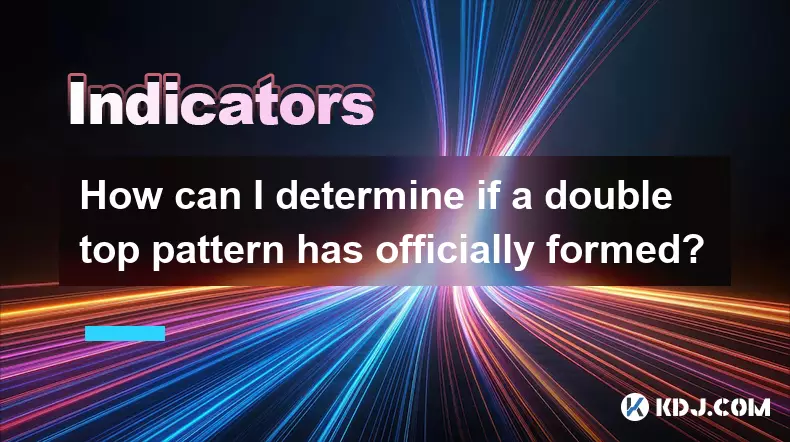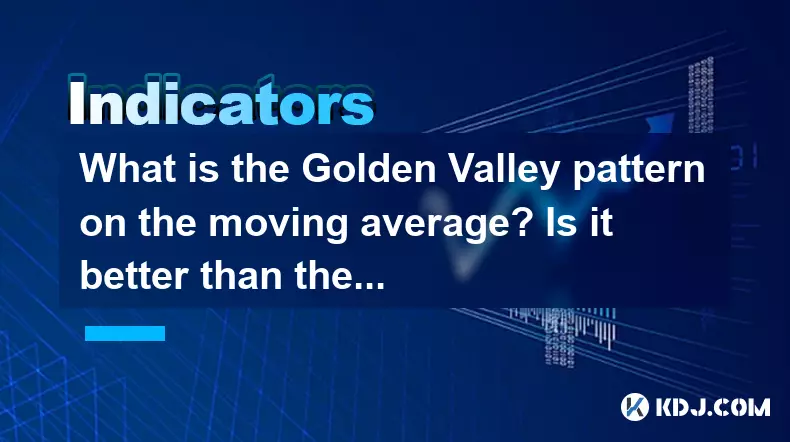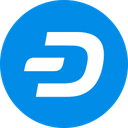-
 bitcoin
bitcoin $114320.977035 USD
-0.40% -
 ethereum
ethereum $4152.439985 USD
-1.75% -
 tether
tether $1.000111 USD
-0.04% -
 xrp
xrp $2.843037 USD
-1.63% -
 bnb
bnb $1013.349380 USD
-1.62% -
 solana
solana $208.362767 USD
-2.10% -
 usd-coin
usd-coin $0.999783 USD
0.00% -
 dogecoin
dogecoin $0.232559 USD
-1.00% -
 tron
tron $0.333491 USD
-1.09% -
 cardano
cardano $0.806310 USD
0.19% -
 hyperliquid
hyperliquid $45.023720 USD
-1.59% -
 ethena-usde
ethena-usde $1.000819 USD
-0.06% -
 chainlink
chainlink $21.241249 USD
-2.11% -
 avalanche
avalanche $30.035416 USD
-0.66% -
 stellar
stellar $0.364984 USD
-2.05%
How to combine AVL indicator with trading volume? Is AVL standard when volume and price diverge?
The AVL indicator, when combined with trading volume, helps traders identify market trends and potential reversals in the cryptocurrency market.
May 22, 2025 at 07:28 am

The Average Volume Line (AVL) indicator is a valuable tool for traders in the cryptocurrency market, providing insights into market trends and potential trading opportunities. When combined with trading volume, the AVL can enhance a trader's ability to make informed decisions. This article will explore how to effectively combine the AVL indicator with trading volume and discuss whether the AVL is standard when volume and price diverge.
Understanding the AVL Indicator
The Average Volume Line (AVL) is a technical indicator that calculates the average trading volume over a specified period. It is typically used to identify trends in trading activity and to confirm the strength of a price movement. The AVL can be plotted on a chart alongside price data, providing a visual representation of volume trends.
To calculate the AVL, you need to determine the average volume over a chosen period. For example, if you choose a 20-day period, you would sum the volume of the last 20 days and divide by 20. This average volume is then plotted on the chart, creating a line that moves up or down based on changes in the average volume.
Combining AVL with Trading Volume
Combining the AVL with trading volume can help traders identify significant market movements and potential reversals. Here's how to effectively integrate these two metrics:
Plot the AVL on Your Chart: Start by plotting the AVL on your trading chart. This can be done using most trading platforms, which usually offer the option to add the AVL as a custom indicator. Ensure that the period for the AVL matches your trading strategy.
Compare Current Volume to AVL: As you monitor the market, compare the current trading volume to the AVL. If the current volume is significantly higher than the AVL, it may indicate strong buying or selling pressure. Conversely, if the current volume is lower than the AVL, it could suggest a lack of interest in the current price movement.
Identify Volume Spikes: Look for instances where the volume spikes above the AVL. These spikes can signal potential turning points in the market. For example, a volume spike accompanied by a price increase may indicate a strong bullish trend, while a volume spike with a price decrease could signal a bearish trend.
Confirm Price Movements: Use the AVL to confirm price movements. If the price is rising and the volume is consistently above the AVL, it suggests that the uptrend is supported by strong buying activity. Similarly, if the price is falling and the volume is consistently above the AVL, it indicates strong selling pressure.
Is AVL Standard When Volume and Price Diverge?
When volume and price diverge, the AVL can provide additional context to help traders understand the market dynamics. However, the AVL itself is not a standard indicator that automatically signals a divergence between volume and price. Instead, it is a tool that can be used to analyze such divergences.
Volume and Price Divergence: A divergence occurs when the price moves in one direction while the volume moves in the opposite direction. For example, if the price is increasing but the volume is decreasing, it may suggest that the uptrend is losing momentum.
Using AVL to Analyze Divergence: When you observe a divergence between volume and price, you can use the AVL to gauge the significance of the divergence. If the volume is below the AVL during a price increase, it might indicate that the uptrend is not supported by strong buying activity. Conversely, if the volume is above the AVL during a price decrease, it could suggest strong selling pressure.
Confirming Divergence: To confirm a divergence, look for consistent patterns where the volume consistently moves in the opposite direction of the price. If the AVL remains below the current volume during these periods, it can strengthen the case for a potential reversal.
Practical Example of Combining AVL with Trading Volume
Let's walk through a practical example of how to combine the AVL with trading volume to make trading decisions in the cryptocurrency market.
Select a Cryptocurrency: Choose a cryptocurrency you want to analyze, such as Bitcoin (BTC).
Set Up Your Chart: Open your trading platform and set up a chart for BTC. Ensure that you can add custom indicators and view both price and volume data.
Add the AVL Indicator: Add the AVL indicator to your chart. Set the period for the AVL to match your trading strategy, such as a 20-day average.
Monitor Volume and AVL: As you monitor the chart, pay attention to the relationship between the current volume and the AVL. Look for instances where the volume spikes above or falls below the AVL.
Analyze Price Movements: Observe the price movements of BTC and compare them to the volume and AVL. If the price is increasing and the volume is consistently above the AVL, it suggests a strong bullish trend. If the price is decreasing and the volume is consistently above the AVL, it indicates a strong bearish trend.
Identify Divergences: Look for divergences between the price and volume. If the price is increasing but the volume is decreasing and consistently below the AVL, it may suggest that the uptrend is losing momentum. Conversely, if the price is decreasing but the volume is increasing and consistently above the AVL, it could indicate strong selling pressure.
Make Trading Decisions: Based on your analysis, make trading decisions. For example, if you observe a strong bullish trend supported by high volume above the AVL, you might consider entering a long position. If you observe a bearish trend with high volume above the AVL, you might consider entering a short position.
Adjusting the AVL Period
The period used for the AVL can significantly impact its effectiveness in your trading strategy. Here's how to adjust the AVL period based on your trading goals:
Short-Term Trading: For short-term trading, you might use a shorter period for the AVL, such as a 5-day or 10-day average. This can help you identify quick changes in volume trends and make more immediate trading decisions.
Long-Term Trading: For long-term trading, you might use a longer period for the AVL, such as a 50-day or 100-day average. This can help you identify more significant trends in volume and make more strategic trading decisions.
Testing Different Periods: Experiment with different periods for the AVL to see which one works best for your trading strategy. You might find that a certain period provides more reliable signals for your specific trading goals.
Limitations and Considerations
While combining the AVL with trading volume can be a powerful tool, there are some limitations and considerations to keep in mind:
False Signals: Like any technical indicator, the AVL can produce false signals. It's important to use the AVL in conjunction with other indicators and analysis techniques to confirm your trading decisions.
Market Volatility: In highly volatile markets, the AVL may be less reliable. Sudden spikes in volume can skew the average and lead to misleading signals.
Contextual Analysis: Always consider the broader market context when using the AVL. Factors such as news events, market sentiment, and overall trends can impact the effectiveness of the AVL as a trading tool.
Frequently Asked Questions
Q: Can the AVL be used for all cryptocurrencies, or is it more effective for certain types?A: The AVL can be used for all cryptocurrencies, but its effectiveness may vary depending on the liquidity and trading activity of the specific cryptocurrency. For highly liquid cryptocurrencies like Bitcoin and Ethereum, the AVL can provide more reliable signals due to the higher volume of trading data. For less liquid cryptocurrencies, the AVL might be less effective due to lower trading volumes and more erratic price movements.
Q: How often should the AVL be recalculated to maintain its accuracy?A: The frequency of recalculating the AVL depends on your trading strategy and the period you have chosen for the indicator. For short-term trading, you might recalculate the AVL daily or even intraday. For long-term trading, weekly or monthly recalculations might be sufficient. The key is to ensure that the AVL remains relevant to the current market conditions and your trading goals.
Q: Are there any specific trading platforms that offer the AVL indicator as a built-in feature?A: While the AVL is not a standard built-in indicator on most trading platforms, many platforms allow you to add custom indicators. Platforms like TradingView, MetaTrader, and CryptoWatch offer the ability to add custom indicators, including the AVL. You might need to download a script or code the indicator yourself to add it to your trading platform.
Q: Can the AVL be used in conjunction with other volume-based indicators to enhance trading signals?A: Yes, the AVL can be used in conjunction with other volume-based indicators to enhance trading signals. For example, you might combine the AVL with the On-Balance Volume (OBV) indicator to confirm volume trends. The OBV measures buying and selling pressure by adding volume on up days and subtracting volume on down days. By using both the AVL and OBV, you can gain a more comprehensive view of volume trends and make more informed trading decisions.
Disclaimer:info@kdj.com
The information provided is not trading advice. kdj.com does not assume any responsibility for any investments made based on the information provided in this article. Cryptocurrencies are highly volatile and it is highly recommended that you invest with caution after thorough research!
If you believe that the content used on this website infringes your copyright, please contact us immediately (info@kdj.com) and we will delete it promptly.
- BlockDAG, DOGE, HYPE Sponsorship: Crypto Trends Shaping 2025
- 2025-10-01 00:25:13
- Deutsche Börse and Circle: A StableCoin Adoption Powerhouse in Europe
- 2025-10-01 00:25:13
- BlockDAG's Presale Buzz: Is It the Crypto to Watch in October 2025?
- 2025-10-01 00:30:13
- Bitcoin, Crypto, and IQ: When Genius Meets Digital Gold?
- 2025-10-01 00:30:13
- Stablecoins, American Innovation, and Wallet Tokens: The Next Frontier
- 2025-10-01 00:35:12
- NBU, Coins, and Crypto in Ukraine: A New Yorker's Take
- 2025-10-01 00:45:14
Related knowledge

What is a tower bottom candlestick pattern? Does it have a high success rate?
Sep 22,2025 at 07:18am
Tower Bottom Candlestick Pattern Explained1. The tower bottom candlestick pattern is a reversal formation that typically appears at the end of a downt...

What is a black hole pattern in the MACD indicator? Is it a cause for concern?
Sep 21,2025 at 06:54pm
Bitcoin's Role in Decentralized Finance1. Bitcoin remains the cornerstone of decentralized finance, serving as a benchmark for value and security acro...

How can I use the psychological line (PSY) to determine market sentiment?
Sep 17,2025 at 02:19pm
Understanding the Psychological Line (PSY) in Cryptocurrency TradingThe Psychological Line, commonly referred to as PSY, is a momentum oscillator used...

How can I determine if a double top pattern has officially formed?
Sep 21,2025 at 03:18am
Understanding the Structure of a Double Top Pattern1. A double top pattern consists of two distinct peaks that reach approximately the same price leve...

What is the Golden Valley pattern on the moving average? Is it better than the Silver Valley pattern?
Sep 21,2025 at 02:54pm
Understanding the Golden Valley Pattern in Moving Averages1. The Golden Valley pattern is a technical formation observed in cryptocurrency price chart...

What does a death cross of the RSI in the strong zone (above 50) mean?
Sep 17,2025 at 10:54pm
Understanding the Death Cross in RSI Context1. The term 'death cross' is traditionally associated with moving averages, where a short-term average cro...

What is a tower bottom candlestick pattern? Does it have a high success rate?
Sep 22,2025 at 07:18am
Tower Bottom Candlestick Pattern Explained1. The tower bottom candlestick pattern is a reversal formation that typically appears at the end of a downt...

What is a black hole pattern in the MACD indicator? Is it a cause for concern?
Sep 21,2025 at 06:54pm
Bitcoin's Role in Decentralized Finance1. Bitcoin remains the cornerstone of decentralized finance, serving as a benchmark for value and security acro...

How can I use the psychological line (PSY) to determine market sentiment?
Sep 17,2025 at 02:19pm
Understanding the Psychological Line (PSY) in Cryptocurrency TradingThe Psychological Line, commonly referred to as PSY, is a momentum oscillator used...

How can I determine if a double top pattern has officially formed?
Sep 21,2025 at 03:18am
Understanding the Structure of a Double Top Pattern1. A double top pattern consists of two distinct peaks that reach approximately the same price leve...

What is the Golden Valley pattern on the moving average? Is it better than the Silver Valley pattern?
Sep 21,2025 at 02:54pm
Understanding the Golden Valley Pattern in Moving Averages1. The Golden Valley pattern is a technical formation observed in cryptocurrency price chart...

What does a death cross of the RSI in the strong zone (above 50) mean?
Sep 17,2025 at 10:54pm
Understanding the Death Cross in RSI Context1. The term 'death cross' is traditionally associated with moving averages, where a short-term average cro...
See all articles










































































